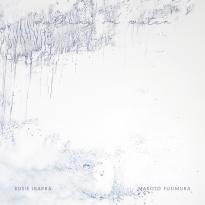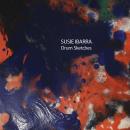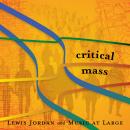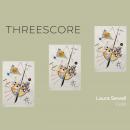Walking on Water
Walking on Water
| Walking on WateriTunes Album Page | |||
|---|---|---|---|
| Song Title | Time | Price | |
| 1. | Elegy in Azurite | 02:01 | $0.99 |
| 2. | Light East of Sendai | 01:29 | $0.99 |
| 3. | Waterfalling | 02:42 | $0.99 |
| 4. | Coastal Birds | 02:59 | $0.99 |
| 5. | High Wave | 02:46 | $0.99 |
| 6. | Natural Lightness | 02:15 | $0.99 |
| 7. | Night Rain | 02:02 | $0.99 |
| 8. | Divine Forgiveness | 01:55 | $0.99 |
| 9. | Celestial Migration | 02:13 | $0.99 |
| 10. | Floating Azurite | 02:04 | $0.99 |
| 11. | New York with Grace | 02:04 | $0.99 |
| 12. | Listening at Himalayan Waterfalls | 11:06 | |
| 13. | Floating Along Banares | 04:48 | $0.99 |
Walking on Water images began as artist Makoto Fujimura’s elegy to the victims of March 11th, 2011 Tohoku Great Earthquake and the Tsunami. The series continues now as a collaboration with visionary composer and avant-garde percussionist Susie Ibarra. Ibarra took an underwater microphone to Himalayan hills, to record the sound of glaciers breaking and melting, and uses that as the immersive backdrop to her composition. Walking on Water, therefore now, has become an elegy to the climate change crisis, as well as an homage to human resilience of hope in dire circumstances. Fujimura and Ibarra hope to install the paintings and the composed music in a series of museums and sacred spaces.
11 Spirituals were composed by Susie Ibarra to accompany Walking on Water paintings by Makoto Fujimura. This album includes two compositions created out of field recordings of water in Sikkim and India in the Himalayas. These field recordings are part of an ongoing project, Water Rhythms: Listening to Climate Change, a collaboration between Susie Ibarra and Michele Koppes (climate scientist, glaciologist and geographer). Ibarra’s DreamTime Ensemble performs and records these spirituals This ensemble features Jennifer Choi, violin; Yves Dharamraj, cello; Claudia Acuña, voice; Jake Landau, guitars, synthesizer & hammond organ; Yuka C. Honda, electronics, and Ibarra herself on drumset & percussion.
Makoto Fujimura (b. 1960, Boston) is a leading contemporary artist whose process driven, refractive “slow art” has been described by David Brooks of New York Times as “a small rebellion against the quickening of time”. Robert Kushner, in the mid 90’s, written on Fujimura’s art in Art in America this way: “The idea of forging a new kind of art, about hope, healing, redemption, refuge, while maintaining visual sophistication and intellectual integrity is a growing movement, one which finds Makoto Fujimura’s work at the vanguard.”
Susie Ibarra is a Filipinx composer, drummer/percussionist, and sound artist who creates live and immersive music that invites people to connect to their natural and built environments. Susie is passionate about working to preserve and support Indigenous music and culture, musika katatubo in the Philippines, and advocating for preserving freshwater towers with sound recordings and creation of new works focused around glaciers and fresh water.
Susie Ibarra is a 2020 National Geographic Explorer in Storytelling, a 2019 United States Artist Fellow in Music, 2018 Asian Cultural Council Scholar supported by the Rockefeller Foundation. She is a Senior TED Fellow and a Yamaha, Zildjian and Vic Firth Drum Artist.
DOWNBEAT
“When I transcribe the recordings of water, it’s pretty amazing,” Ibarra explained, referring to her “Water Rhythms” piece. “It’s beats andrhythms and tempos. It’s all very exact. It’s notambient sound. It’s critical. It’s cultural. We fol
low the glacier melt from source to sink, from the mountains to the rivers.We have recordings of ice caves in Greenland— they’re dripping and moving. It’s not at all static.” And neither is Ibarra."
"It might be a favorite recording of yours for me now. There’s just something about it that’s so tender and so fragile and so emotionally charged. It goes from being almost indie rock-sounding in the beginning and then the water takes over. You created this thing as a memorial to the tsunami victims, which was this horrific, awful thing where everybody’s deluged and they lost their lives in this, but while it’s horrific, it’s also extremely beautiful and extremely poignant. The sounds of the water and how they become music. How they become almost a percussion orchestra. It was like a string orchestra of water…" [FULL ARTICLE] - Frank J. Oteri




